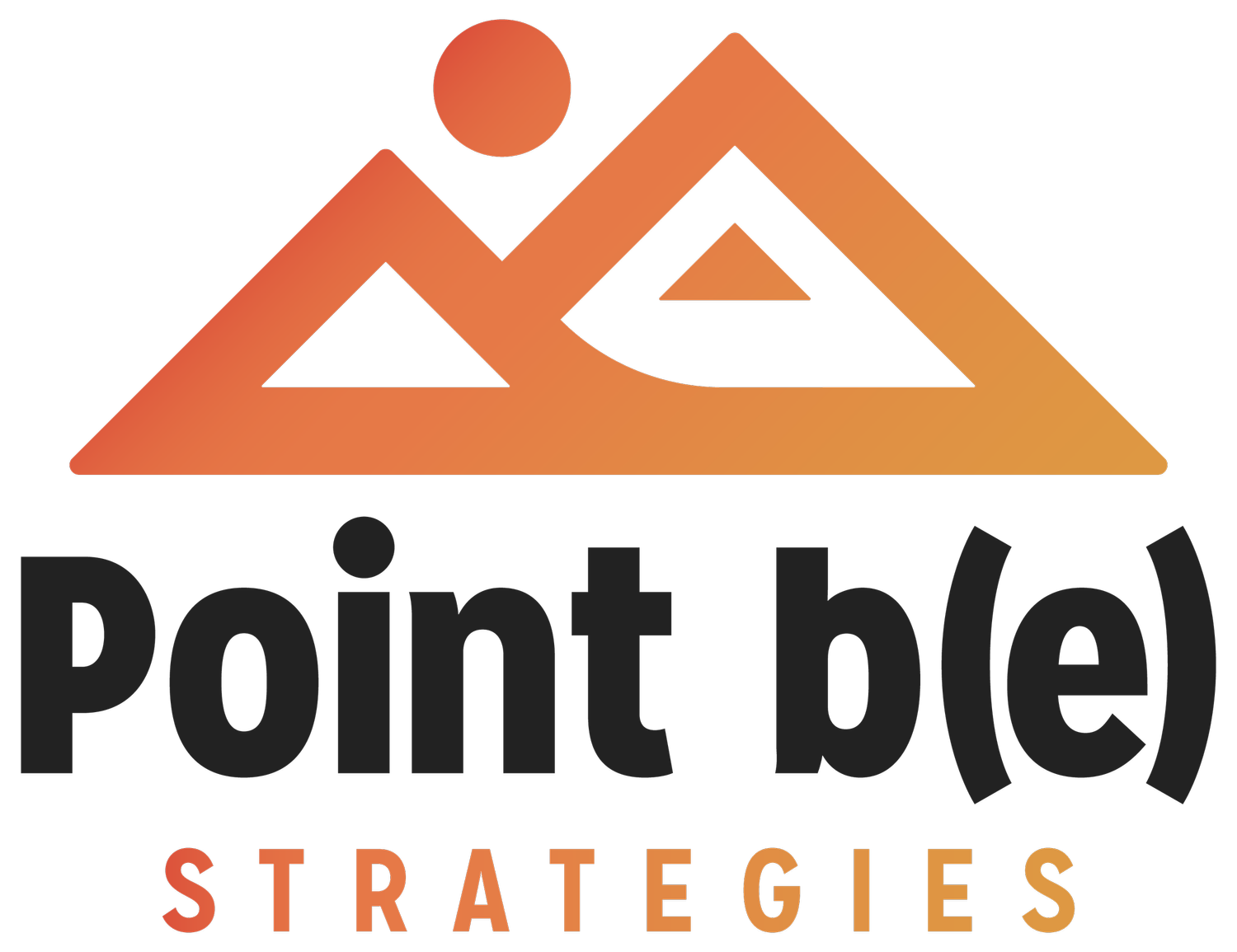How strategic planning can be different – the Point b(e) Strategies Approach
By Ellie CanterPicture This:
You and your colleagues are locked in a conference room for two days, tasked with developing a compelling, concise list of priorities to guide your organization for the next three to five years. You are supplied with copious amounts of caffeine and breakfast pastries. Maybe you are coming to this process with hesitation—having seen the best laid plans completely flop when reality sets in and finding that no one can be bothered to change their day-to-day to pursue irrelevant objectives. Maybe you are questioning who is in the room and whether you’ll be able to effectively represent the breadth and depth of the work that needs to be done to truly make a difference for your organization and your community. You might also be half-invested, just hoping that the process won’t drag on so you can return to the pressures of your overflowing inbox and list of to-dos.
Many clients come to us with some variation of this experience. And we often tell them to trust the process. Or, more specifically, to trust our process.
When the world shut down in March of 2020, we faced the reality that traditional strategic plans—those often developed in conference rooms over a couple of days—weren’t going to cut it. Out of necessity—and the recognition that no one is capable of sitting through a two-day strategic planning process on Zoom—we began facilitating one- to two-hour virtual strategic planning sessions, stretching out our strategic planning processes over several months. We found this new cadence gave participants the breathing room to engage, reflect and process, affording them the time and space to develop their priorities more intentionally and collaboratively. Our clients’ visions were bolder, their next steps clearer, and their board and staff buy-in deeper. By the time the world opened up again, and in-person meetings resumed, Point b(e) Strategies was convinced that the best strategic plans don’t happen with a few people over a few days but, rather, with a broad range of stakeholders over time.
Cadence isn’t the only difference you’ll see in our process. First, we believe that every strategic plan benefits from authentic stakeholder engagement. We encourage all of our clients to invite a broad base of voices—from their frontline staff and volunteers to their participants and partners—to help articulate their organization’s strengths, challenges, and unique offerings and to help shape their organization’s future direction in a way that is grounded in the perspectives and experiences of those most impacted. Throughout this process, we use a critical multicultural lens to name and unpack the systems of oppression that shape power dynamics inside and outside of the organization.
Across planning sessions, Point b(e) Strategies incorporates adult learning theory, which acknowledges that participants bring with them knowledge and experiences that inform and shape the ways in which they approach learning and problem-solving. We employ a vast toolkit that includes hands-on experiential, education-based activities that invite participants to reflect, play and share using novel and unexpected prompts. These approaches are backed by neuroscience: Research shows that when adults have the opportunity to explore a subject deeply and actively through a range of creative activities, they increase neuroplasticity, allowing for more innovative, out-of-the box thinking and problem-solving.
Last, and most importantly, we don’t believe in “cookie cutter” plans or processes, and we shape every strategic planning process around the needs and goals of each client. Our sequencing of sessions enables us to co-create content with participants along the way—acknowledging when a shift is needed in the process or when a critical stakeholder group needs to be invited to lend additional perspective. As our clients explore their organizational identity and value, our facilitators serve as mirrors, helping to reflect back key themes, areas of divergence, and opportunities for further dialogue. Through shared learning, introspection, and dialogue, together, we construct a reflection of the present and develop a vision for the future for the organization and the community.
